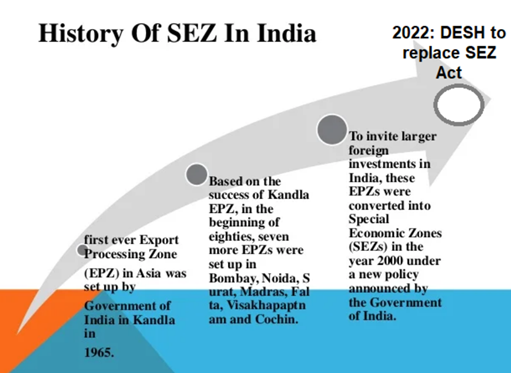Free Courses Sale ends Soon, Get It Now


Free Courses Sale ends Soon, Get It Now



Disclaimer: Copyright infringement not intended.
Context
About Special Economic Zone
SEZ can be set up by
Types of SEZ
What were the shortcomings of the SEZ Act?
What is Development of Enterprise and Service Hubs (DESH)?

Significance of DESH
© 2024 iasgyan. All right reserved